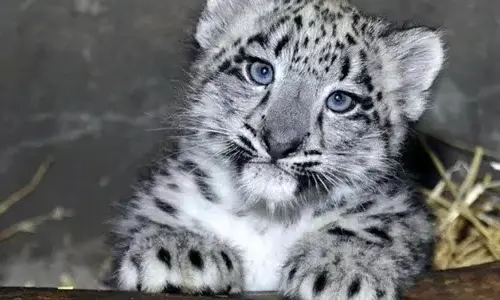Interesting facts about leopards
Snow leopards may be considered one of the most beautiful creatures on the planet, but they are also an interesting and distinctive member of the feline family.
Why are the snow leopards so different?
Snow leopards are unique and have many different factors from other major cats in the world.
For starters, snow leopards are unusual in how their bodies are structured and functioned.
Snow leopards paws are much wider and covered with more fur, providing cats with claws that act as "Snow Boots" in the cold and often snowy climates they live in.
Snow leopards' tails and noses are also different and both are a result of their icy habitat.
The nose of the leopard is short but has a wide nasal cavity that helps warm the air before reaching the cat's lungs.
Even the snow leopard's tail helps it overcome the cold climate.
Its tail is about 3 feet long and has thick feathers.
This is where the snow leopard becomes unusual - unlike lions and tigers, the snow leopard cannot roar.
His is due to their underdeveloped vocal cords.
Scientists are not sure whether this helps with digestion or if this is a dietary requirement for the cat to get essential vitamins or get rid of parasites.
In addition to the vegetation, these leopards often prey on wild sheep or goats.
Not after sunset or dawn.
These leopards are even active at unusual times.
Snow leopards aren't always nocturnal, but they are rarely seen during the day.
They are predominantly active at dawn and dusk, making them cats with the "muscle activity model" as the scientists name.
No need to be afraid of snow leopards.

In terms of behavior, these cats are very shy, passive aggressive mammals.
Hey will most likely run away from the scene if disturbed while feeding or resting and have never been verified by a snow leopard.
The only thing that can make the snow leopards aggressive is to intimidate their cubs - not recommended!
They are mostly solitary and elusive mammals, but their behavior can vary depending on how many humans are present near their habitat.
Since these animals are so shy and elusive, it is difficult to study them.
That also doesn't help as the snow leopard population is just around six thousand and is declining due to habitat loss and poaching.
The real threat?
Although poaching can be prevented by arresting individuals who do it, it is still difficult to stop people in Asia from harming and killing them, because leopards prey after pets.
Beautiful, unique, and quirky creatures in nature that we can only hope to see for scientific research.
Hopefully their numbers will grow again soon so we can learn more fascinating facts about these "cool" cats.
 52ºc, New York
52ºc, New York







